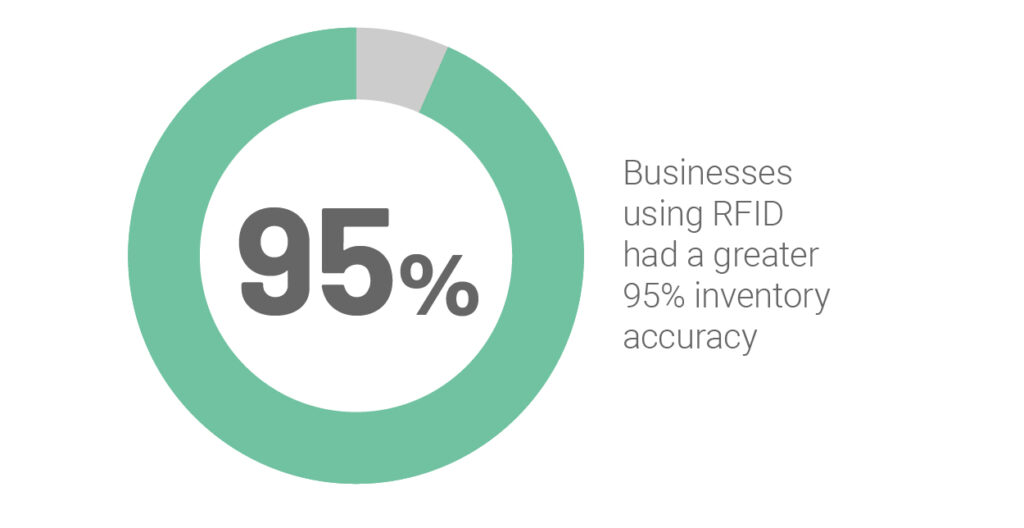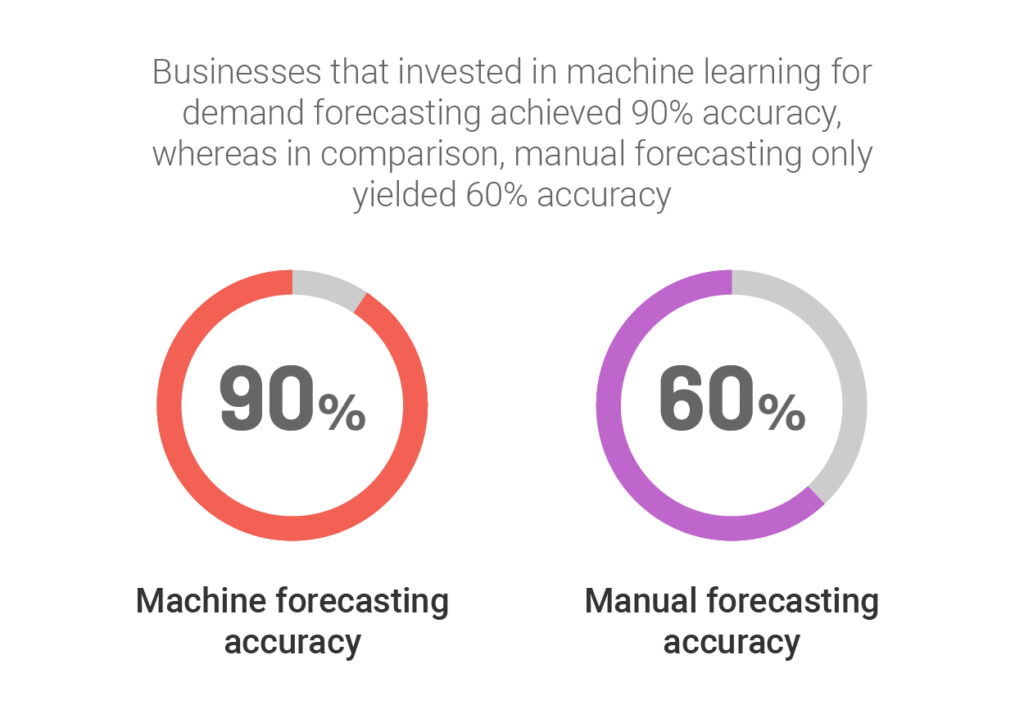The Importance of Real-Time Inventory Tracking
Time to read: 6 minutesInventory tracking is one of the most challenging aspects of running a successful and efficient eCommerce business. It can be akin to moving furniture with a grocery cart. Ideally, a logistics system can show you exactly how much inventory you have, allowing you to excel in supply chain management planning. Without effective inventory management, your operations would be more vulnerable to stockouts and delays. It can even become too expensive to maintain.
Real-time inventory management allows you to track, view, and manage inventory levels across the entire eCommerce supply chain.
This level of inventory management and visibility enhances resilience. The added flexibility and oversight enable you to meet customer demand. It can help replenish inventory on a schedule, plan for unforeseen events, and maintain business operations.
Online merchants can access the most recent inventory information anywhere across their distribution network with real-time inventory tracking. An inventory management system that integrates with your supply chain interacts with all sales channels. This software links with all your fulfillment centers to set up an on-demand logistics operation. With it, you can track multiple inventory channels within a single dashboard.
With real-time streamlined inventory data, a precise and clear view of inventory levels at any given time is possible. Enjoy unparalleled insights into historical and future demand, as well as SKU and channel success. You can make the most out of inventory data to justify business decisions. Business expansion is easy by optimizing your supply chain with the help of past inventory trends.
Finally, using real-time data offers transparency that makes it simple to observe operations without getting involved in the nitty-gritty details of daily operations. Supply chain planning is a more pleasant experience as you have actual data to guide your decision-making.
Five Benefits of Real-Time Inventory Tracking
Real-time inventory tracking is essential as eCommerce businesses handle enormous volumes of inventory across numerous sales channels. Through inventory tracking, online merchants may reduce the risk of overstocking, stockouts, and customer dissatisfaction. Neglecting it can be costly and permanently damage your reputation as a seller.
Real-time inventory tracking is a crucial tool for modern enterprises trying to survive in the fast-paced online market of today.
1. Assists in Inventory Management
Real-time inventory management summarizes your inventory’s cost, sales potential, and aging lifespan. You can prioritize “soon to expire” items over stock with a longer shelf life and avoid having dead stock on hand.
The same data is also helpful in organizing storage inside the warehouse. For example, if you have large orders for heavy machinery arriving, you’ll need to ensure there is enough space in your fulfillment center before the delivery.
2. Maintain Ideal Inventory Levels
Optimizing inventory levels is a real challenge because demand is constantly changing. However, real-time inventory data allows you to more accurately plan and store inventory at each warehouse based on past data and trends.
You’ll want to consistently have the optimal amount of inventory without spending too much for storage or more money invested in procurement. Data is essential in helping you determine the appropriate quantity of safety stock.
Real-time inventory levels are the best way to accurately and efficiently restock items always to meet customer demand.
Modern inventory software can even automatically alert you when inventory is running low. You can then create automated reorder point notifications based on historical inventory performance at the SKU level.
3. Accurate Reporting and Analysis
Accurate inventory management is made possible by having access to real-time inventory data.
Inventory shrinkage, incorrect item picking, and theft could go unnoticed if appropriate technology doesn’t capture real-time data. These problems are more prevalent if you rely only on manual inventory tracking through spreadsheets.
Your business is vulnerable to stockouts and overstocking, which reduce customer satisfaction and cut your profits. Integrating technology makes it easier to maintain accurate inventory records, giving you greater access to your online store’s inventory at all times.

Inventory Management Statistics – Meteor Space
4. Optimized Processes & Workflows
One of the main advantages of receiving inventory data in real-time is that you can quickly and easily identify problem areas in your supply chain. Instant access gives you the ability to apply the necessary corrective action immediately.
Inventory management is dependent on other steps in the supply chain, such as lead times for manufacturing and warehouse receiving. To effectively manage the supply chain, real-time inventory data offers insights into how long a product travels from the manufacturer to your warehouses.
Having inventory data helps businesses minimize logistics costs, streamline logistics operations, and eliminate supply chain bottlenecks.
5. Superior Customer Experience
The customer experience is enhanced in many ways by real-time inventory solutions.
One significant benefit is that it enables you to identify your most popular products on sale. This way, you can ensure you order enough of them to avoid stockouts (while also accounting for supply chain problems).
With accurate demand forecasting, you can make projections using a more data-driven approach. You can strategically choose how much inventory you need at each physical location or how much to allocate to a sales channel.
Use inventory data to prevent backorders and late deliveries. When you always have inventory ready for sale, your customers won’t have to see the dreaded “out-of-stock” notification.
Three Ways to Streamline Your Inventory Tracking
Real-time inventory solutions assist businesses of all sizes with their supply chain operations. Establishing a multichannel retailing strategy lets you manage better unforeseen delays, unanticipated disruptions, and steadily rising customer expectations.
Even though there are many inventory management options, there is also the option of working with tech-savvy third-party logistics (3PL). They can provide outsourced fulfillment, real-time inventory tracking, and complete logistics solutions.
Inventory monitoring does come with its own set of challenges. But the benefits outweigh the negatives, and there are many opportunities to grow your firm. Your business may easily overcome potential obstacles and achieve goals by implementing a few strategies to simplify and enhance inventory tracking. Here are some suggestions to improve your inventory tracking process.
1. Use an Inventory Tracking System
An inventory tracking system is the best way to deal with shortages, delays, discrepancies, or redundant charges. You’ll want to look for cutting-edge inventory management solutions. Choose comprehensive software with integrated capabilities to monitor inventory.
Inventory tracking becomes more difficult when you increase the number of sales channels and warehousing alternatives (internal or outsourced). A good inventory management software can organize your varied business requirements and automate inventory management. Inventory control software can drastically improve productivity, streamline your supply chain, and get better results.
2. Make Use of Data for Inventory Forecasting
You can use inventory data to find selling patterns and product fluctuations. Compare this to manually modifying your inventory levels in response to consumer demand. For exceptionally accurate planning, inventory forecasting lets you change your anticipated orders depending on past sales. Compare and contrast numbers on global product sales to better understand current market trends and even your inventory turnover ratio.
Forecasting helps you improve inventory control by determining how much inventory you’ll need to meet upcoming orders. Automation will give you a clearer idea of how much you’ll sell over a specific period.

Inventory Management Statistics Worth Knowing – Canary7
3. Inventory Audits
Conduct inventory audits to verify the accuracy between your current stock counts and financial records. Regular inventory audits provide you with a thorough understanding of your stock flow, assist you in determining your earnings and losses, and keep your company operating efficiently.
Updating your inventory tracking is easier with routine audits. That’s because audits provide crucial information about where your inventory is located. You can also track if specific SKUs have been accidentally picked or lost. Being vigilant on constant inventory changes gives more opportunities to fix potential issues.
Online merchants benefit greatly from real-time inventory tracking, revolutionizing inventory control and increasing operational effectiveness. Real-time inventory tracking makes accurate and up-to-date visibility into inventory levels, locations, and movements possible.
eCommerce business owners can now have information to make wise choices about supply chain management, order fulfillment, and production scheduling. You can avoid stockouts, reduce excess inventory, and guarantee prompt order fulfillment using real-time inventory information.
Improved supply chain management is a clear advantage of real-time inventory tracking. Your logistics managers can work more seamlessly with suppliers and distributors with real-time inventory levels and demand information.
ZhenHub’s inventory management software takes the guesswork out of maintaining your eCommerce inventory levels. Track shipments accurately and get complete visibility on every order. Your customer’s peace of mind begins when you sign up at our website for free.